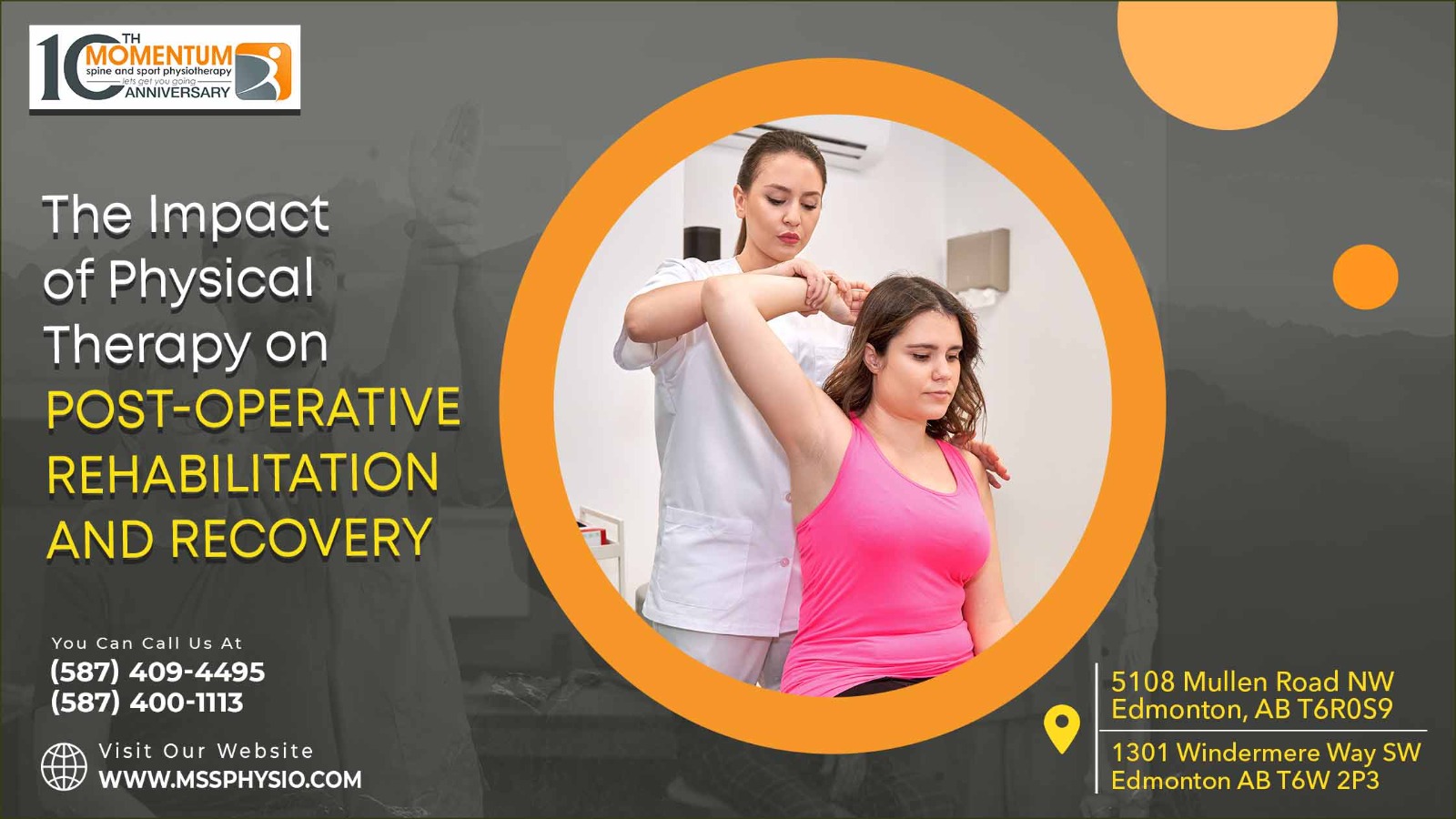Surgery, no matter its nature or the circumstances leading to it, represents a significant milestone in a patient’s health journey. While the surgical procedure itself plays a crucial role in addressing and correcting health issues, the postoperative period is equally vital for long-term recovery and optimal health. It’s during this recovery phase that Physical Therapy (often referred to as physiotherapy) shines brightly, serving as the cornerstone of a successful rehabilitation process. For those seeking quality services, Physical Therapy Edmonton stands out, with establishments like Momentum Physiotherapy offering specialized, patient-centered care.
Post-surgery: The Body’s Adaptation Process
After a surgical procedure, the body undergoes several adaptive reactions to promote healing. Inflammation occurs naturally, ushering essential nutrients and immune cells to the surgical site, but it can also lead to pain and restricted movement. Extended periods of rest or immobilization may result in muscle atrophy and joint stiffness. Simultaneously, the formation of scar tissue can limit flexibility, especially if it forms over joints or attaches to nearby tissues. Furthermore, the body may adopt new movement patterns to avoid discomfort, potentially establishing poor habits that can affect long-term functionality.
Understanding the Role of Physical Therapy Post-operatively
After surgery, a patient’s body is in a vulnerable state, often involving incisions, immobilization, or even alterations in anatomy. Physical therapy is instrumental in helping restore function, strength, and mobility. By searching for “physical therapy near me,” patients can find professionals trained to guide them through a structured recovery process, preventing post-surgical complications and ensuring optimal healing.
- Regaining Mobility: One of the primary goals post-surgery is to restore movement. Physical therapy plays a pivotal role in ensuring that patients can move without pain, decreasing the risk of stiffness or muscle atrophy.
- Strengthening Muscles: Surgery can lead to muscle weakness due to disuse or anatomical changes. Therapeutic exercises are designed to rebuild strength, ensuring stability and support for healing tissues.
- Reducing Pain and Swelling: Post-operative pain and inflammation are common. Physical therapy offers techniques such as ice, heat, electrical stimulation, and gentle mobilization to alleviate these symptoms.
- Scar Tissue Management: As the body heals, scar tissue can form, which might limit movement and cause pain. Therapists employ specific massage techniques and stretch to manage and reduce scar tissue formation.
- Mental Well-being and Confidence: Surgery can be a mentally taxing experience. Patients often grapple with anxiety about their mobility, the potential for persistent pain, or the fear of not being able to return to their normal lives. Engaging in physical therapy can instill confidence. With each session, patients observe tangible progress, which can be uplifting and foster a positive mindset.
- Reduced Reliance on Medications: Consistent engagement with physical therapy can diminish the need for pain medications, including opioids, which carry a risk of dependency and side effects. By employing natural techniques to manage pain and accelerate healing, physical therapists provide patients with safer, long-term solutions.
- Prevention of Future Injuries: Through physical therapy, patients learn proper body mechanics, posture, and techniques to protect their bodies. This education and conditioning are invaluable in reducing the risk of future injuries.
- Education on Safe Movement: Equipping patients with knowledge is paramount. Physical therapists teach patients about safe postures, movements, and techniques to prevent re-injury and support long-term recovery.
Potential Pitfalls: Complications Without Proper Post-operative Rehabilitation
Surgery, regardless of its nature, is a significant event for the body. While modern surgical techniques have evolved to be minimally invasive and highly effective, the postoperative period remains crucial. Without proper post-operative care, especially in the form of physical therapy, a host of complications can arise:
- Loss of Functionality: One of the primary risks of not engaging in proper post-operative rehabilitation is the potential loss of functionality. The area operated upon, if not mobilized or exercised correctly, can become stiff, leading to a decreased range of motion and weakened muscles.
- Development of Scar Tissue: Post-surgical areas, if not moved or massaged appropriately, can lead to the development of adhesions or scar tissues. This can result in pain and restrict movement further.
- Risk of Re-injury: Without adequate strength and flexibility, which are often regained through targeted physical therapy, the risk of re-injury is significantly heightened.
- Chronic Pain: Failing to address the root cause of post-surgical pain could lead to chronic pain conditions. Physical therapy can help mitigate this risk by improving function and mobility.
- Prolonged Recovery Time: Without the guided structure of physical therapy, recovery can be inconsistent and delayed. This might mean a longer time away from work, daily activities, and hobbies.
The Lasting Impact of Physical Therapy on Recovery
For those who have undergone surgery, the importance of an efficient recovery process can’t be overstated. Physical therapy not only speeds up the healing process but ensures that recovery is thorough and long-lasting. By addressing the physical challenges head-on and providing a roadmap to rehabilitation, physical therapy empowers patients to reclaim their lives post-surgery.
In today’s digital age, patients often turn to online searches like “physical therapy near me” to find reputable providers. With establishments like Momentum Physiotherapy Edmonton, patients can be assured of quality care throughout their recovery journey.
In conclusion, while surgery may be the initial step toward addressing a health concern, physical therapy is the bridge that spans the gap between the operating room and a full return to regular activities. Embracing physical therapy in the post-operative phase is not just a recommendation; it’s the key to unlocking optimal health and functionality.
